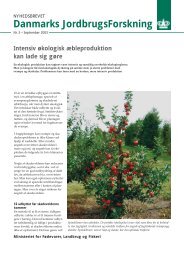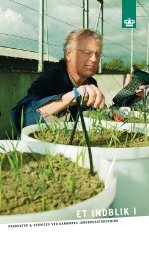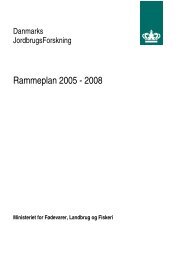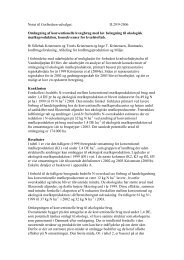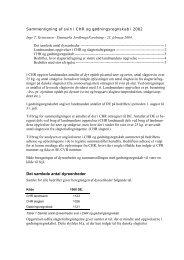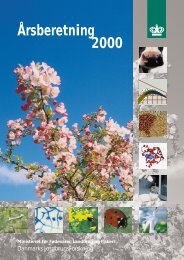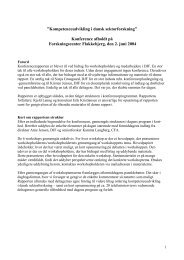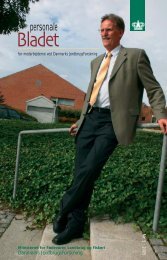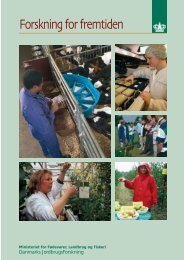Reproduction performances and conditions of group-housed non ...
Reproduction performances and conditions of group-housed non ...
Reproduction performances and conditions of group-housed non ...
You also want an ePaper? Increase the reach of your titles
YUMPU automatically turns print PDFs into web optimized ePapers that Google loves.
- Paper III -<br />
<strong>group</strong> <strong>housed</strong> under different on-farm <strong>conditions</strong> <strong>and</strong> 2) to get insight in the level <strong>and</strong> be-<br />
tween-farm <strong>and</strong> within-farm variation in indicators <strong>of</strong> energy intake, fear <strong>and</strong> social stress<br />
in <strong>non</strong>-lactating sows <strong>group</strong> <strong>housed</strong> under various on-farm <strong>conditions</strong>.<br />
2. Materials <strong>and</strong> methods<br />
2.1 Herds, sows <strong>and</strong> design <strong>of</strong> recordings<br />
The study was conducted during an 11-month period from May 2003 to March 2004 in<br />
fourteen Danish commercial sow herds with <strong>group</strong> <strong>housed</strong> <strong>non</strong>-lactating sows. The herds<br />
were chosen to represent different layouts <strong>and</strong> management routines. The herd sizes varied<br />
from 180 to 1000 sows. Farrowing batch interval was 1, 2 <strong>and</strong> 2½ week in six, five <strong>and</strong><br />
three herds, respectively. In all herds, the sows were moved to the service department <strong>and</strong><br />
<strong>group</strong>ed on the day <strong>of</strong> weaning or the day after. One herd had integrated service <strong>and</strong> pregnancy<br />
department. In all other herds, the sows were moved to the pregnancy department<br />
between 0 to 28 days after first mating. In Table 1 the layout <strong>of</strong> the herds are detailed. It<br />
appears e.g. that eight <strong>of</strong> the 14 herds practiced <strong>group</strong> feeding (bi<strong>of</strong>ix, on the floor <strong>and</strong> long<br />
feeding troughs) in the pregnancy unit.<br />
Four batches were observed on each farm from weaning to farrowing. In each <strong>of</strong> the four<br />
batches, ten focal sows (F-sows) were r<strong>and</strong>omly chosen in the lactation department just<br />
before the sows were moved to the service department on the day <strong>of</strong> weaning. In those<br />
herds where the sows were divided into different pens according to size (small, normal,<br />
large) in the service department the farmer marked the ‘normal’ sows the day before weaning<br />
<strong>and</strong> the ten F-sows were then chosen r<strong>and</strong>omly from this <strong>group</strong> <strong>of</strong> sows. This procedure<br />
was carried out to ensure that all F-sows were placed in the same pen (or at least in adjacent<br />
pens) to make sure that it was possible to observe all F-sows at the same time. To allow<br />
individual identification during behavioural observations, the ten F-sows were sprayed with<br />
a number on their back <strong>and</strong> sides.<br />
62




